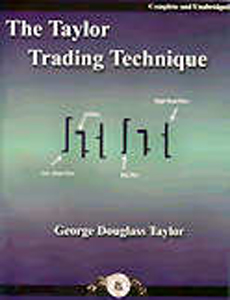RSI
Further Reading
Relative Strength Index or RSI is a technical analysis indicator that determines the magnitude of gains against the magnitude of losses over a certain period of time. RSI is widely used to determine whether a market is overbought or oversold. The calculation involves doing analysis of the bullish ranges against the bearish ranges for a certain period of time which is usually 14 days.
The calculation of RSI is done in the following way:
RSI = 100 - (100 / 1 + RS)
At first, you need to add all the bullish trades (when the prices go up) and then it has to be divided by the sum of the bearish days when the price slides down. Now the calculation can be turn into an index with the range of 0 to 100. It is to be mentioned that usually the RSI will refer to a bullish signal when it crosses the 30 line from beneath while on the other hand it will signify a bearish signal if crosses the 70 line from above.
In order to simplify the explanation of the calculation, RSI has been broken down to the basic components including: Average gain, average loss and RS.
The calculation that we have taken under consideration is based on 14 periods where the initial calculation for average gain and average loss are the simple 14 period averages.
The formula is:
First Average Gain = Sum of the Gains over the past 14 periods / 14
First Average Loss = Sum of the Losses over the past 14 periods / 14
Then for the following calculations, prior average and the present gain loss is taken under consideration:
Average Gain = [(Previous Average Gain) * 13 + current gain] / 14
Average Gain = [(Previous Average Loss) * 13 + current loss] / 14
Although the default look-back period for RSI is 14, but you may consider lowering it in order to improve the sensitivity or raising it to reduce sensitivity. It is more likely for the 10-day RSI to hit the overbought or oversold level in comparison with the 20- day RSI.
Glossary List- How to Trade Forex and Gold Options
- How to Trade the Gold Price and Profit!
- Forex Trading the EUR/USD Pair € EURO and $ US Dollar
- How to Trade Stock Market Indices S&P500
- How to Trade Crude Oil
- Forex Trading Psychology
- What Are Broker Recommendations?
- Free Tickets to Trading & Investing Seminar & Expo ($18) Brisbane 2013
- Stock Calc App
- All About Warrants
- Introduction to Exchange Traded Funds
- Introduction to Exchange Traded Funds: Features
- Introduction to Exchange Traded Funds: Domestic ETFs
- Introduction to Exchange Traded Funds: International ETFs
- Exchange Traded Commodities
- Australian Stock Scan
- Australian Online Share Trading
- List of Trading Books
- Interesting Thoughts about the Australian Dollar
- What's the Meaning of Hawkish?
- Do You Know How To Use the P/E Ratio
- Trading, Religion and Politics - Do They Have Anything in Common?
- Shares that are Volatile that Double and Half in the Short Term
- Telstra (TLS) T3
- Margin Call by E-mail
- The Cost of Holding a Position
- Lack of Disclosure: Compensation from ASX Listed Company
- Unrealistic Returns and Benchmarks
- CMC Markets Down
- Quality versus Quantity Forex Trading
- Woolworths 1H Sales $30.7bn up 3.2%
Date added 31-01-2013 - ASIC Fines CommBank's CommSec
Date added 25-09-2012 - Industry Super Network Calls to Ban High Frequency Trading (HFT)
Date added 22-09-2012 - NAB Launches Online Share Trading Platform
Date added 19-09-2012 - Reserve Bank of Australia Says 23 Countries Holding AUD
Date added 18-09-2012 - Australia Post Digital Mailbox
Date added 10-09-2012 - Winners and Losers of Trading for Week 2
Date added 16-01-2012 - 2012's First Week of the Best and Worst Traded Stocks
Date added 09-01-2012 - 2011's Last Best and Worst Traded Stocks
Date added 05-01-2012 - Best and Worst Pre-Christmas Traded Stocks
Date added 30-12-2011 - Trading Winners and Losers for Dec. 12-16
Date added 19-12-2011 - Best and Worst Traded Stocks for Dec. 5-9
Date added 13-12-2011 - Top 3 Best and Worst Traded Stocks
Date added 05-12-2011 - ASX Glitch Trading Halt
Date added 27-10-2011 - Worst Trade Stocks (and the Best)
Date added 06-08-2011
Top 150 Public Companies Listed on the Australian Stockmarket as at 29/05/2009
- BHP Billiton
- Westpac Banking Corporation (WBC)
- Commonwealth Bank of Australia (CBA)
- National Australia Bank (NAB)
- Telstra (TLS)
- ANZ
- News Corporation (NWS)
- Woolworths Limited(WOW)
- Woodside Petroleum Limited (WPL)
- Rio Tinto
- Westfield Group (WDC)
- Westfarmers Limited (WES)
- QBE Insurance
- CSL
- Newcrest Mining Limited (NCM)
- Origin Energy Limited (ORG)
- Santos Limited (STO)
- AMP Limited (AMP)
- Macquarie Group (MQG)
- Foster’s Group Limited (FGL)




